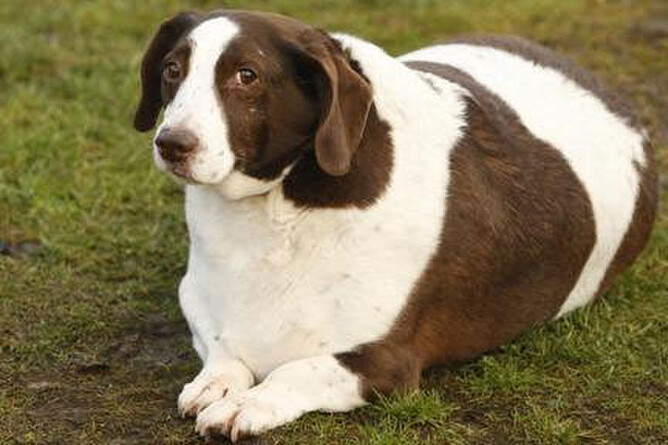With the summer sunshine long gone, many pets don't get to go out and run around as they would when the weather is warmer and the the days are longer. This transition to lesser activity means your dog needs to be fed not only less food, but they might need to be put on a different type of diet too.
How colder temperatures can affect your dog's weight
When the weather gets colder, we typically make excuses not to take our dogs out for very long walks, which of course means less exercise - for everyone. If a dog gets less exercise, they won't use up as many calories and as a result they don't need to be fed the same volume of food. If you feed your furry friend exactly the same way as you do when the weather is warm, they run the risk of gaining too many extra pounds. This in turn puts their health at risk.
But what if your dog is an outside dog? According to Dr. Ken Tudor, a key biological imperative of all animals and humans is to maintain a constant core body temperature. Shivering is a means of doing that. But shivering uses a large amount of calories. Even non-shivering calorie expenditure increases in the cold. Fat deposits and fur density help insulate and decrease the calorie expenditure of shivering.
Studies suggest that dogs consistently exposed to low temperatures need two to three times the amount of calories they would need at a more moderate temperature. The increase in calories leads to more fat accumulation and insulation, and decreases or compensates for the amount of calorie loss from shivering and nonshivering. Without the extra calories, these pets actually lose weight.
How to feed your dog over autumn and the cold seasons
Dogs need to be be fed according to their body condition and level of fitness as well as how they are kept, whether it's indoors or outdoors. If your dog's exercise routine is reduced at all - whether it's a lot or just a little - this needs to be applied to the amount of food they are fed each day over the autumn and winter months.
If you notice your canine companion is starting to gain weight, you need to reduce their daily calorie intake. If this does not work, you might need to talk to your vet, who could recommend a reduced fat diet for your dog.
Naturally, the amount you feed your dog over the colder months also depends on their age and if they are suffering from any sort of health condition. If this should be the case, you need to feed them a diet that's been recommended by the vet who is looking after your dog.
Regardless of age and whether they spend their time inside or outside, you should never leave dry food out on a constant basis for your dog to help themselves to when they want. It is far better to feed dogs twice a day, once in the morning and then again in the evening.
Understand your dog’s circumstances and apply them to make the appropriate changes to their diet and exercise. And remember: you’re getting exercise too when you walk your dog!
Do you have questions about your dog’s diet? Are you on the lookout for new food options? Give us a bell in store on 09 448 2227 and we can chat about your dog’s diet.

